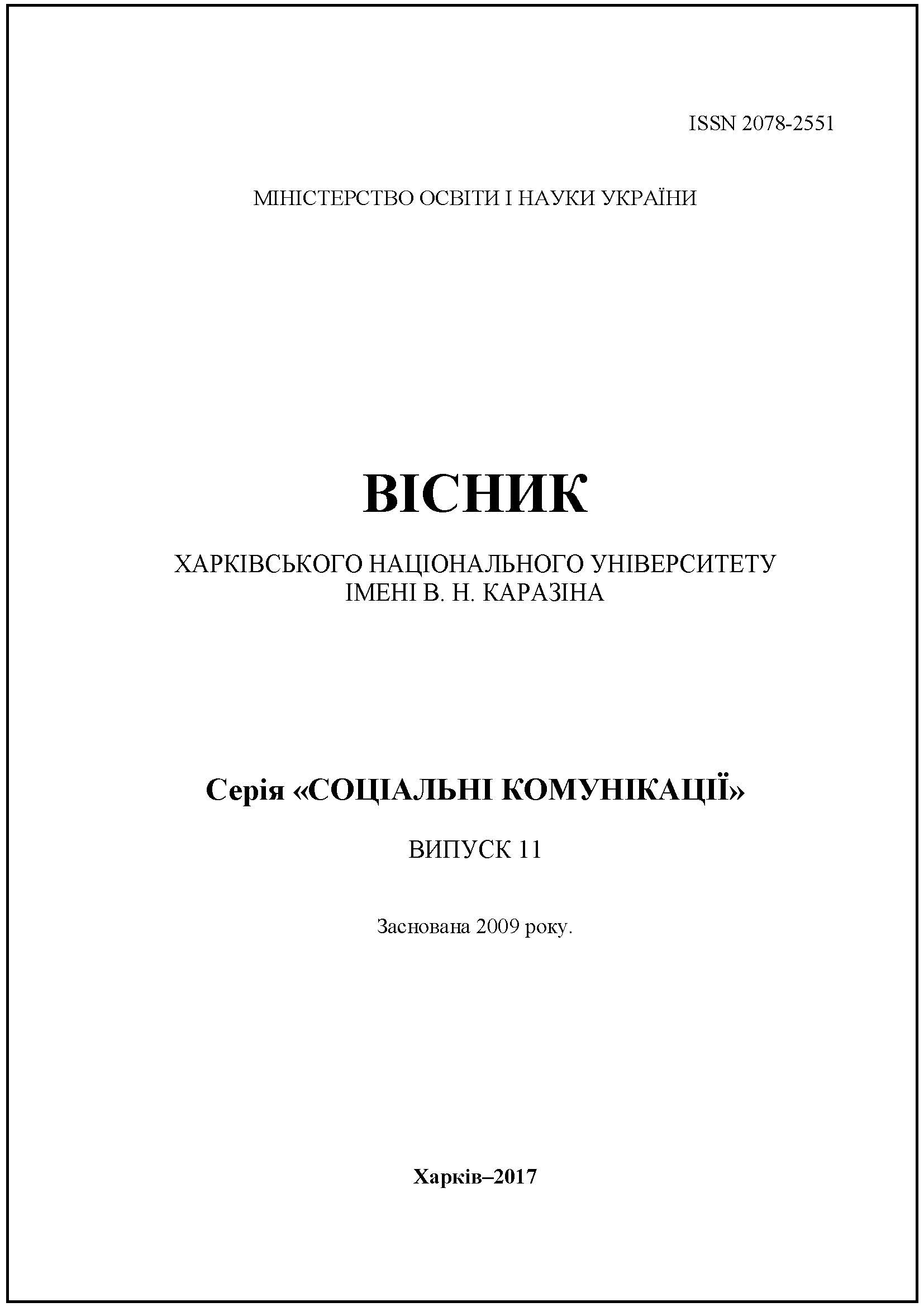Крос-медіа як нова модель адресантно-адресатних конфігурацій партиципативної журналістики
Анотація
Стаття присвячена вивченню специфіки крос-медійної журналістики як особливого типу партиципативної журналістики, котрий характеризується інтеграцією мереж і переходом до індивідуалізації. Зміни медіасередовища, спричинені розвитком крос-медіа, трансформують класичні форми адресантно-адресатних конфігурацій, оскільки крос-медіа презентує специфічний спосіб комунікації, який передбачає перманентну зміну ролей адресанта й адресата в комунікативному процесі. Специфіка інтеракції залежить від типу адресата, проте основна перевага крос-медіа полягає в охопленні користувачів усіх типів.
Завантаження
Посилання
Городенко Л. Теорія мережевої комунікації / Л. Городенко. — К. : Академія Української Преси, 2012. — 387 с.
Хабермас Ю. Ах, Европа. Небольшие политические сочинения / Ю. Хабермас. Т. 11. — М. : Весь мир, 2012. — 155 с.
Einspänner-Pflock J. Digitale Gesellschaft — Partizipationkulturen im Netz / Einspänner-Pflock J., Dang-Ahn M. & Thimm C. (Hg.). — Münster : LiT Verlag, 2014. — 256 p.
Engesser S. Die Qualität des Partizipativen Journalismus im Web. Bausteine für ein integratives theoretisches Konzept und eine explanative empirische Analyse / Engesser S. — Wiesbaden : Springer Verlag, 2013. — 373 p.
Immerschitt W. Crossmediale Pressearbeit. Unternehmensbotschaften über klassische und neue Kanäle gekonnt platzieren / Immerschitt W. — Wiesbaden : Springer Verlag, 2010. — 198 p.
Jenkins H. Convergence Culture: Where Old and New Media Collide / Jenkins H. — New York : NYU Press, 2006. — 368 p.
Lester P. M. Digital Innovations for Mass Communications. Engaging the Users / Lester P. M. —New York ; London :Routledge, 2013.— 296 p.
Neuberger С. Interaktionsmodi und Medienwandel / Neuberger C. // Digitale Öffentlichkeit(en) /Oliver Hahn, Ralf Hohlfeld, Thomas Knieper (Hrsg.). — Konstanz : UVK, 2015. —P. 21–34.
Neuberger C. Journalismus im Internet. Profession-Partizipation-Technisierung / Neuberger C., Nuernbergk C., Rieschke M. —Münster : Springer Verlag, 2009. — 254 p.
Silberer G. Marketing mit Multimedia: Grundlagen, Anwendungen und Management einer neuen Technologie im Marketing / Silberer G. —Stuttgart :Schäffer-Pöschel Verlag, 1995. — 343 p.
Simons A. Journalismus 2.0 (Praktischer Journalismus) / Simons A. —Konstanz :UVK, 2011. — 236 p.
Schultz S. Brücken über den Medienbruch: crossmediale Strategien zeitgenössischer Printmedien / Schultz S. — Berlin ; Münster : Lit-Verlag, 2007. —132 p.
Stöber R. Neue Medien. Geschichte. Von Gutenberg bis Apple und Google. Medieninnovation und Evolution / Stöber R. — Bremen : Edition Lumiere, 2013.
Zumstein K. Medienwandel. Von der Printzeitschrift zum Online-Magazin / Zumstein K. — Saarbrücken : VDM Verlag Dr. Müller, 2007.




